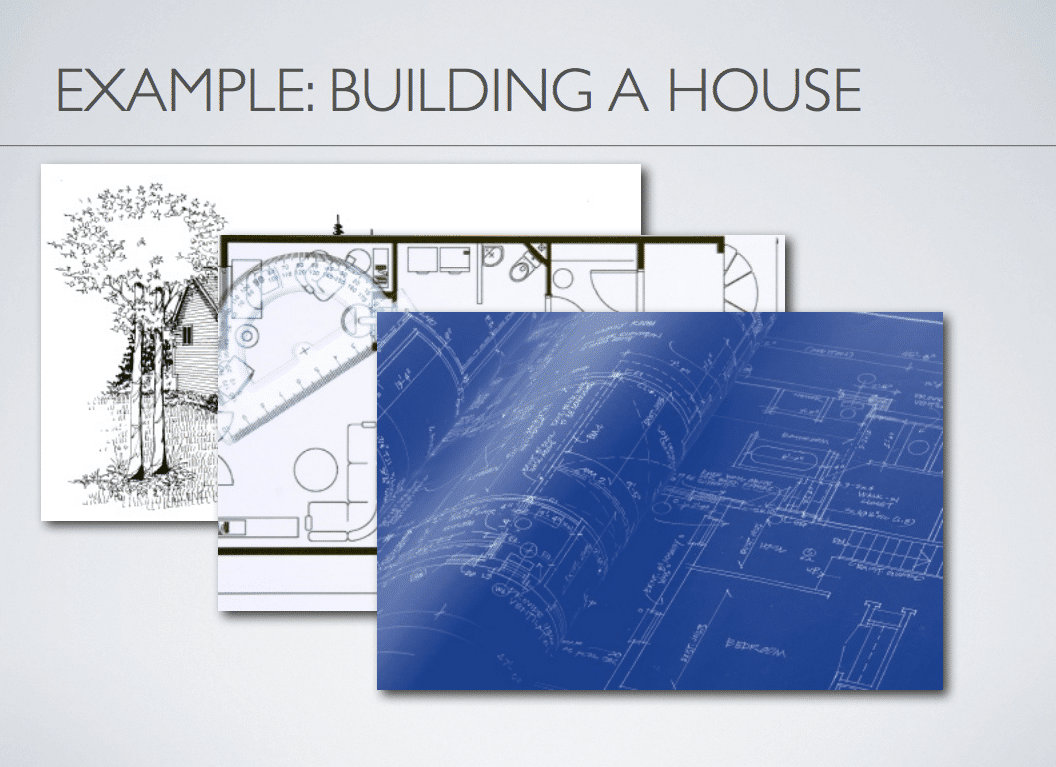The Key to Effective Communications - Scope vs. Detail
In our recent webinar, Video, Screencasts and Still Images - Using the Right Tool at the Right Time, we spent a brief amount of time on the concept of Scope vs. Detail in your customer interactions.
What do we mean when we talk about scope vs. detail? All communications have a naturally or arbitrarily enforced time/length constraint. The communication may be limited by several factors:
- The time the person is willing to devote to the communication
- The time the person is able to devote to the communication
- The attention the person is able to give the communication
By being aware of these constraints you can adjust the scope and detail of your communications so that each communication can be "completed" in the available amount of time depending on willingness, availability and attention span.
House Sketch

Let's look at the process of building a house. The first communication will likely be a sketch of the finished home. This is very high in scope (it covers the entire house) but very low in detail (we have no information on measurements, materials, room size, division, etc.).
We certainly couldn't build a house based on a sketch. We wouldn't even decide to build a home based solely on a sketch. But it is the first step we take in that decision process. The communication is complete and we are able to decide if we want to move onto the next communication.
Floor Plans
Next we have floor plans. Here we have decreased the scope. We are dealing with just the inside of the home and only one floor at a time. But we have increased the detail. We can now see basic measurements for the rooms, where doors will be, where the hallways will be and where we might put furniture and appliances. Once this communication is complete we will know if we want to continue to the next stage or revise the floor plans to better meet our needs.
Blueprints
Finally we move to the blueprints. This is very high in detail but lower in scope. We no longer have information about furniture, it is all about building the structure to the required specifications.
Are You Starting Out With Blueprints or Ending With Floor Plans?
With each communication you create, be it a blog post, video, screencast or ScreenSteps lesson, you want to keep this idea of scope and detail in mind. Is the communication a sketch of a house? Then it should be very broad in scope and low in detail. Does the communication need to be a blueprint? Then make sure that you lower the scope and increase the detail.
The real mistake happens when your first communication with a customer is a blueprint or your last is just a floor plan. Give the customer too much detail at the beginning and they will be lost. Leave them with not enough information and they won't be able to successfully implement your product/solution.
In future posts we will look at some real world examples of this principle in action.



